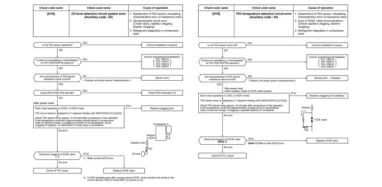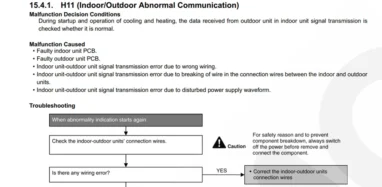With the world population now fully aware of the catastrophic effect of climate change on the environment, everyone’s (government, manufactures, individuals) hands are on deck; jostling harder than ever to find better ways to achieve sustainable energy.
Recently, world leaders organized a summit-themed COP26 in Glasgow to reduce greenhouse emissions so that the environment can become safer for people to live in. HVAC is not left out because, in more recent times, the effort has been made by HVAC unit manufacturers to ensure that the air circulating through the system is healthy and that is what led to the discovery of TFA. I know you are already wondering “What is TFA in HVAC?” Well, that’s the purpose of this article, keep scrolling to the very past content to learn all you need to know about TFA.
What is the meaning of TFA in HVAC
In HVAC, TFA means Treated Fresh Air and it is a device attached to an HVAC system that brings in air from the outdoor environment and filters it before finally distributing it into the room or space where it is needed. It is also called Fresh Air Handling Unit (FAHU) because apart from ensuring cleaner air, it also does the work of an Air Handling Unit. An air handling unit helps circulate the existing air within a space (they don’t bring in fresh air from the outside).
TFA is equipped with heating and cooling coils that supply heat and coolness to a room or workspace as required. If the water passing through the coil is cold, then the system will transmit cold air to the room and if the water passing through the coil is hot, hot air will be distributed to provide heat for the building.
Treated Fresh air unit working principle
It is very easy to understand the working principle of a TFA because its working mechanism is not complex.
When TFA is operating, it makes use of air drawn from the outside environment. This air then flows through the air filter (which helps in clearing the air) before being transmitted through the heat exchanger or the heating/cooling coil and then ultimately circulated to the room.
The latest versions of TFA usually come with some attachments like; Solenoid valves, sensors, and automation systems that help to control the speed of the fan, regulate water valves to control the flow of water through the system to save energy, and maintain a standard temperature and humidity for the room.
Advantages of treated fresh air unit
If your HVAC system has a TFA unit, here are some benefits you will enjoy.
- It helps to pre-condition fresh air coming into the building.
- With its ability to regulate humidity and temperature, it helps users save up additional costs on a regulating device.
- It provides the building with standard and conducive ventilation without having to pay extra costs for energy consumption.
- It supplies air at a temperature level that is at par with the indoor temperature.
- The latest TFA is designed with a new technology that ensures low maintenance, high efficiency, and compact design.
Disadvantages of Treated Fresh Air (TFA)
Hardly in this world can you find anything without a deficiency. Treated Fresh Air may come with some benefits but it also has a disadvantage.
- Treated Fresh Air (TFA) works with an exhaust system. When TFA brings in air from the outside, it will lead to an increase in the level of air pressure in the room or building. The exhaust system will help to remove excess air in the room so that the air pressure can be brought down to normal.
Differences between TFA and AHU
AHU which stands for Air Handling unit does a similar job to the Treated Air Unit (TFA) but with slight differences. Read on to learn more about the differences.
- TFA works 100% with air taken from the outside while AHU works with air existing within a space or room. Or sometimes makes use of both outside and inside air.
- TFA draws air from the outside and most times, this air comes in excess; therefore an exhaust system is required for optimum operation. On the other hand, an AHU does not require an exhaust system to be installed before it can work effectively.
- TFA makes use of outside air to provide cooling or heat into the room which makes it consume more energy compared to an AHU unit that makes use of air present within a room to provide cooling and heating effect. In essence, AHU consumes lesser energy.
- TFA is best used in a room where ventilation is the utmost priority while AHU is best used in a room or a building where heating and cooling is the priority.
- TFA is designed to ventilate small spaces or rooms and as a result, they are usually equipped with small motors and fans that are installed separately but connected with a belt. AHU on the other hand is designed for large spaces or rooms, therefore, they usually have large induction motors that are connected to a fan.
Best TFA units
The best TFA unit is FlexAir and here are some distinguishing features that make it stand out.
- It is very easy to maintain the inbuilt filter and the assemblage of the fan is less rigorous.
- It is equipped with standard filters – G4 /MERV 7/ ePM coarse.
- Its connection system is uniquely designed to ensure efficiency.
- Selection tool
- It can cover a large space area.
Treated fresh air unit DAIKIN
DAIKIN is a Treated Fresh Air unit product that is designed to improve and maintain the overall indoor air quality by distributing enough fresh outdoor air while also regulating humidity.
Here are some benefits associated with using DAIKIN
- It makes use of fresh air taken from outside, thereby improving the general quality of air present within a building.
- It achieves a balance between the amount of air leaving the system through the exhaust system and the amount of air being in circulation to achieve efficient ventilation.
- Each unit of the DAIKIN system is made according to dimension requirements.
More resources:

